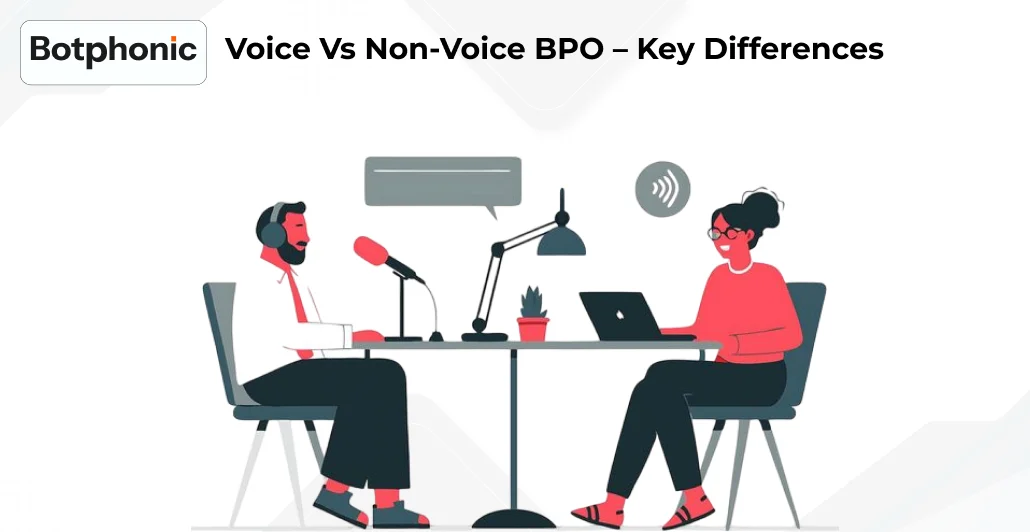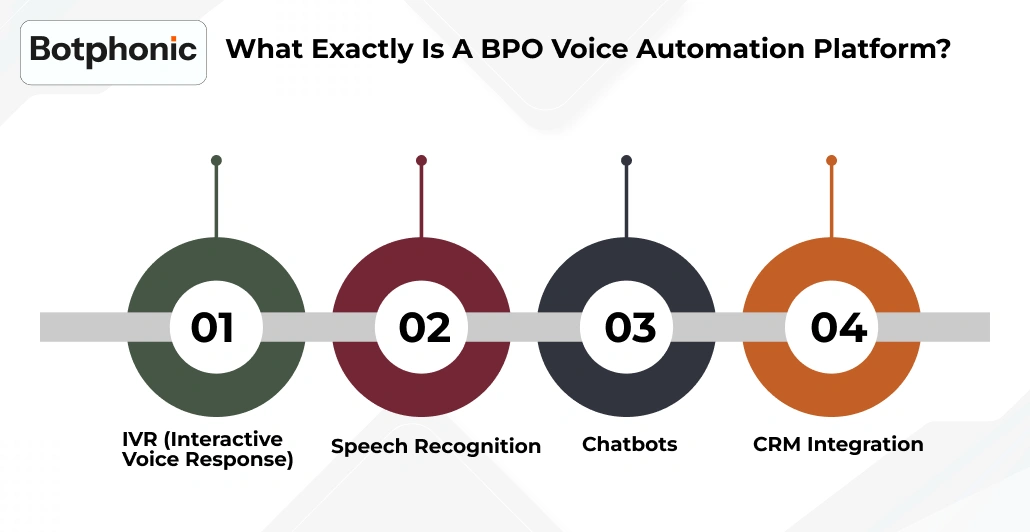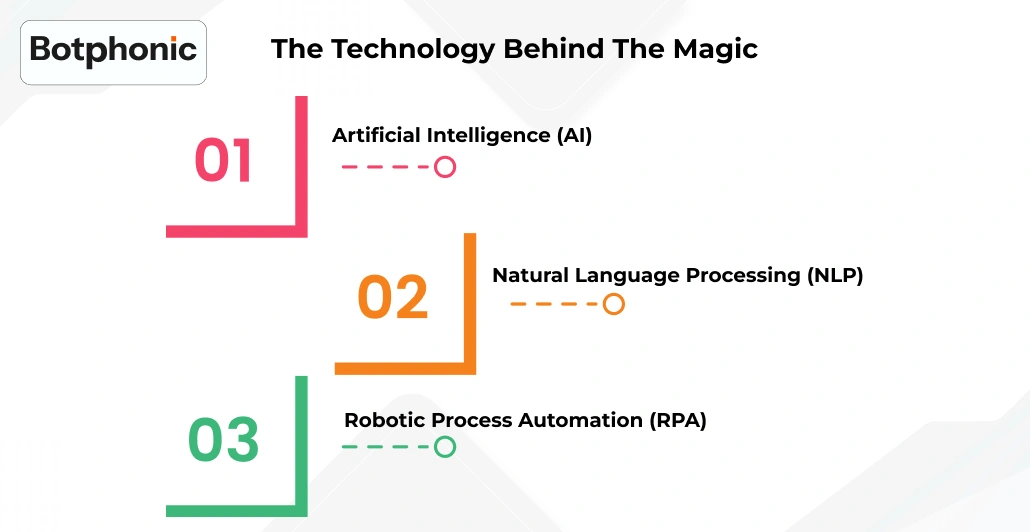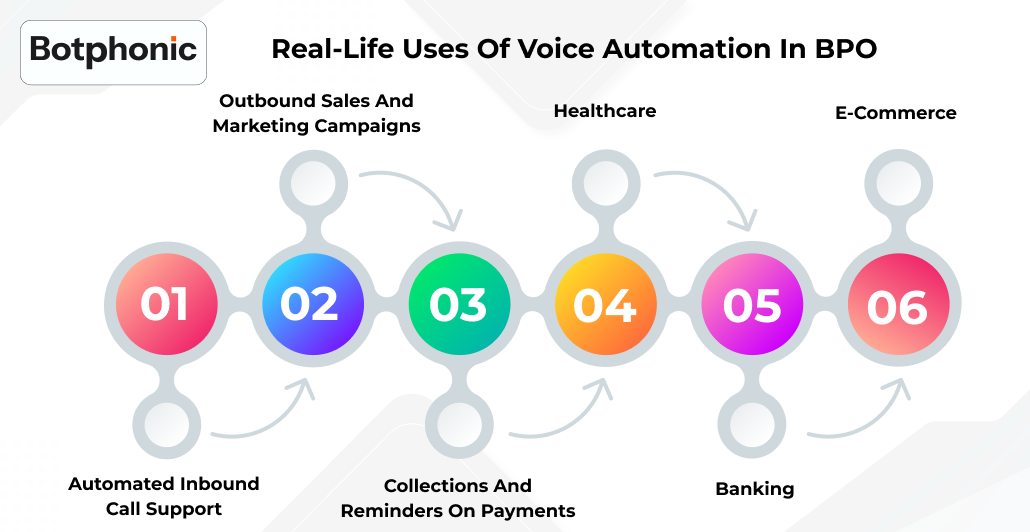
Summarize Content With:
Summary
This blog will explore how voice-based automation technologies are changing the business process outsourcing (BPO) sector. The list will include the distinctions between voice and non-voice BPO, some of the urgent challenges in the industry, and how automation is the solution, as well as some recommendations when choosing the most suitable option.
Key Takeaways
- BPO voice automation systems enable BPOs to reduce costs by optimising call handling processes and increasing customer satisfaction.
- BPO automation allows businesses to handle large numbers of calls, provides multilingual support, and introduces important analytics.
- An integrated solution involving both voice and non-voice dayshift projects provides complete solutions to its clients.
- Selecting an appropriate automation platform is an exercise that needs to keenly take the scalability, integrations, and vendor support into consideration.
Introduction
Global businesses are not possible without BPO companies, which create customer seamlessness and operational assistance. The new transformation is big. The emergence of BPO voice automation platforms. They are smart tools that incorporate both AI and intelligent software to simplify voice and non-voice interactions, thereby making customer service friendlier, faster, and more cost-efficient.
In an era where customers are expecting faster responses and bespoke attention, BPO providers, through voice and non-voice technologies, are leveraging these technologies to differentiate themselves. It is not only more cost-effective to replace manual processes with next-gen automation but also a way to provide clients with the game-changing experience they require.
Voice vs Non-Voice BPO – Key Differences

Voice BPO: Focused on Human Interaction
- Receives and makes outbound and inbound calls to assist customers with their questions, problems, or purchases. In modern setups, many companies now integrate an AI call assistant to handle routine queries, ensuring faster and more efficient service.
- There is a need to have good communication skills and the ability to solve problems.
- It is favoured by clients working in such spheres as retail, banking, telecom, and healthcare.
- The work environment of the voice-based BPO work includes shifts (i.e., night shift or rotating).
Non-Voice BPO: Working Behind the Scenes
- Specialises in data entry keypunching, chat support, email responses, work moderation and Internet research.
- Includes back-office services, office support, order-taking, transcription and social media.
- The communication occurs via chat, email, or written matter; there is no voice involved.
- More and more talent is looking to work on non-voice dayshift projects with steady hours.
- BPO firms involving non-voice accounts recruit aspirants based on particular abilities such as writing, information analysis and technical troubleshooting.
Market Trends
- More companies are integrating a mix of voice-based and non-voice projects on a 24/7 basis to cover their customers.
- Recruiting of non-voice BPO specialists is on the rise because of the requirement for well-trained chat, email, and information support associates.
- Non-voice work is bulking on a day shift that offers a work-life balance and helps to draw fresh talent.
- The voice of BPO, including AI call centre solutions, is still growing in the world, particularly in real-time support and sales.
Problems BPOs Face Today
Despite their advantages, traditional BPOs face some problems with:
- Expensive human resource: Hiring, motivation and training of employees are expensive.
- Dealing with heavy amounts of calls: The call volumes may be so high that the call centre agents may feel overwhelmed, sometimes resulting in high wait times.
- Language barriers: International customer demographics need multilingual communication, which is very time-consuming and expensive to train.
- Customer unhappiness: Almost 72 per cent of the employees complain that poor processes affect employment and make it difficult to work (McKinsey).
Long queues, duplicate questions, and understaffing usually damage customer satisfaction and bottom lines.
Why Automation is the Answer
The scope of automation impacting the success of BPOs is:
- Providing 24-hour customer support, so you don’t have to wait until business hours.
- Accelerating routine hereditary undertakings such as call handling, booking appointments and data entry via a BPO automation computer program.
- Saving money through cutting down on extra agents and overtime.
- The ability to offer efficiency enhancements so that teams can concentrate on complex cases and strategic growth.
Among the tools instrumental in this change are innovative mechanisms such as voice-based artificial intelligence, chatbots, speech recognition and CRM connectivity. Automation in the BPO sector is not about displacing individuals, but rather about allowing them to concentrate on the high-touch work that requires human attention.
Try Botphonic’s BPO voice automation platform for smarter, faster support!
Request a Free DemoWhat Exactly Is a BPO Voice Automation Platform?

Smart software BPO voice automation. Another use of AI in innovative software is in inbound and outbound phone calls. It does work, such as answering questions, giving details, or taking reservations without the requirement of a human on the telephone.
Common Features
- IVR (Interactive Voice Response): Automated call self-service menus.
- Speech recognition: Works out and comprehends natural language knowledge.
- Chatbots: Support multiple channels of customer service.
- CRM integration: An automatic updating of the customer profile and record of interaction.
How It’s Different from Normal Voice Processes
Compared to conventional voice-based processes that involve human agents, automation platforms work with AI and machine learning. This means:
- No queuing to call an available agent -they are called immediately.
- Good quality and tone, even during peak hours.
- Different language support and customisation can be provided more easily.
Tips for Choosing the Right Platform
- Seek to find sites that will integrate with your CRM and workflow systems with ease.
- Choose your solutions based on the scalability to increase as your business does.
- Have good data security and compliance.
The Technology Behind the Magic

Voice automation platforms use state-of-the-art technology:
Artificial Intelligence (AI)
- Greater capacity to converse through the use of ongoing learning and adjustment.
- AI agents talk normally, identify different pronunciations and vary tone according to the caller’s mood.
- They do not tire, and thus they are optimal in dealing with high call volumes.
Natural Language Processing (NLP)
- Powers sentiment analysis- getting at the sentiments of what a customer is saying.
- Allows the system to provide precise answers to even the most complicated queries.
- Assistance in supporting multiple languages, with immediate switching among them according to the needs of the customer.
Robotic Process Automation (RPA)
- Automates post-call work-logging entries, updates CRM, and follows up.
- Releases human workforces from data management, allowing everyone to go and focus on pertinent projects.
- Reminds, sends feedback, collects payments and does nothing manual.
Real-Life Uses of Voice Automation in BPO

Practical advantages of voice automation systems:
- Automated inbound call support: Answers popular questions, routes calls and solves problems in zero time without waiting.
- Outbound sales and marketing campaigns: Makes cold calls, qualifies leads and makes appointments; releases sales teams to close deals.
- Collections and reminders on payments: Automates payment reminders and follow-up schedules without human intervention.
- Healthcare: Handles patients, appointment reminders and follow-ups with total security.
- Banking: It takes care of voice transactions instantly, updates your account the moment something happens, and even sends real-time fraud alerts so you can feel secure.
- E-commerce: Helps customers get quick answers to their questions, confirms orders seamlessly, and offers product suggestions that match their needs.
These functions make sure that the customers are happy with fast and natural conversations that are satisfying every time around.
Benefits You Can Measure
| Benefit | Outcome |
| Cost Savings | Up to 40% reduction in transactional costs |
| Call Resolution Time | Answers in <500 ms; faster issue resolution |
| Customer Satisfaction | Higher CSAT and retention rates |
| Employee Productivity | More focus on high-value tasks |
Challenges You Need to Know
There are the obstacles of every innovation:
- Integration concerns: There is the possibility of upgrading legacy systems used by BPOs to integrate with new platforms.
- Privacy and compliance: Should be a secure solution to abide by the stringent data protection regulations (such as GDPR, HIPAA, PCI-DSS).
- Discovering the human touch: It’s all about finding that sweet spot where the speed and efficiency of AI meet the warmth and understanding of a real human connection.
Specifically, select vendors that provide high privacy, are easy to integrate, and are conveniently trainable.
The Future of BPO: Voice, Non-Voice & Omnichannel Automation
The voice and non-voice integrated process is what the future BPO world is about:
- Chat, voice and email support no longer exist in isolation but instead are now part of seamless omnichannel experiences.
- Thanks to AI-powered analytics, we can now keep an eye on quality and track performance in real time, ensuring everything runs smoothly.
- Upskilling of employees: Agents become able to collaborate with AI, becoming creative and strategic.
The future is dynamic, productive and customer-focused, where the BPO voice automation systems are on the centre stage.
Checklist to Pick the Right Platform
Check these boxes before you make your decision:
- Basic requirements: IVR, speech recognition, multilingual, and CRM integration.
- Scalability: Fits as your business and high-volume requirements expand.
- Good vendor support: Onboarding, 24×7 assistance and training.
- Security & compliance: Meets global information security standards.
- Interface: Non-technical teams can use and manage it.
Discover Botphonic’s feature-rich BPO voice automation platform!
Request a Free DemoConclusion
With the combination of humans and AI equipping the industry, the BPO industry is gaining momentum. Automation is not depriving people of humanity; it is just freeing talented individuals to work in more important areas.
Regardless of whether your firm deals with voice process or non-voice projects, the current platforms, such as Botphonic A, allow you to set the benchmark high in terms of service and efficiency.
Whether you are looking to staff voice-based BPO, non-voice dayshift initiatives, or mix and match the two together under the same umbrella, automation is your ticket to future-ready, scalable success.

